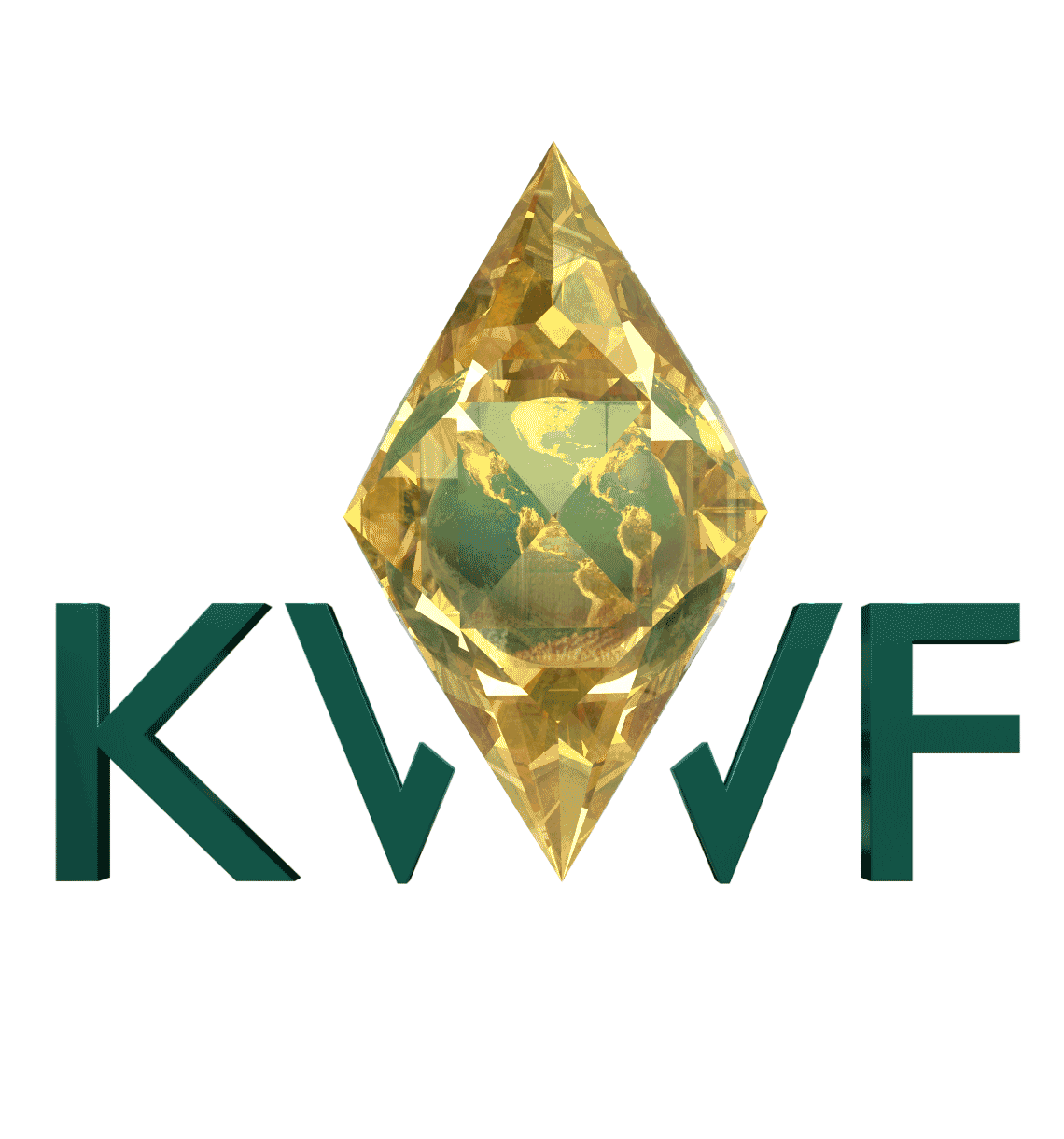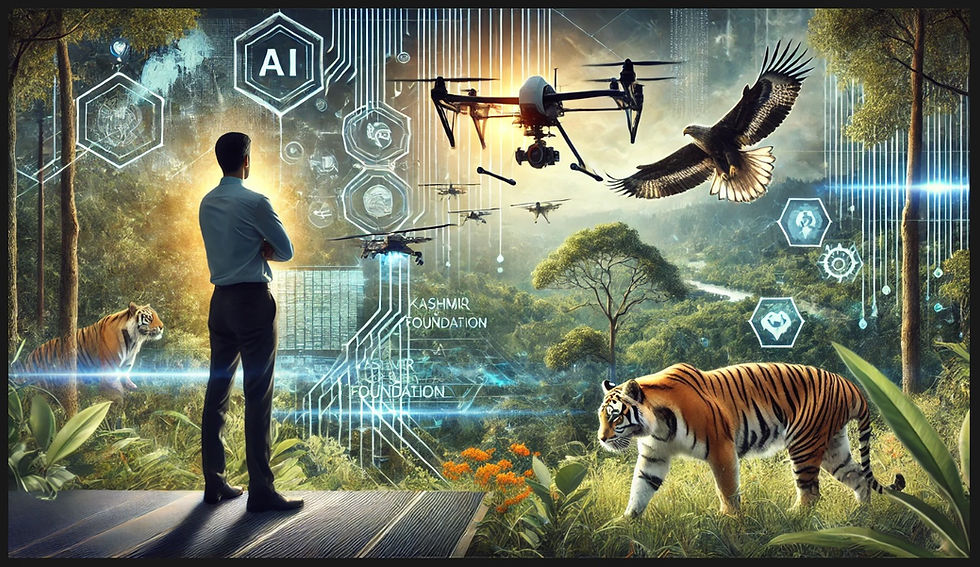Drones for Conservation: KwF Takes on Brazil’s Cerrado
- Kashmir World Foundation

- Feb 22, 2019
- 5 min read
Updated: Jul 10, 2024
Kashmir World Foundation (KwF) focuses on furthering conservation efforts through applications of education, technology, and global collaboration.
KwF’s hands-on, innovative workshop, Fly for Conservation, kicked off February 4th through 9th. The groundbreaking workshop took place in the Brazil Cerrado Protected Area Mosaic in the Sertão Veredas-Peruaçu (MSVP) and hosted over 40 participants. With a goal to train local conservationists in the use of unmanned aerial vehicles (UAV) drones for use in biodiversification and agroforestry efforts, KwF took the initiative to set this mission in motion with the contribution of their time and the drone expertise of many trained experts and participants, as well as the financing of their travel flights to Brazil.

This project was also made possible by WWF Network’s Forest Innovation Fund, which funded the cost of drone kits and equipment, accommodations and meals for all participants. By supporting this project, WWF-Brazil seeks “to explore the potential for low-cost drones to be used in the conservation, protection, and management of forests” (Piovesan, 2019). Other organizations that supported this initiative include Cavernas do Peruaçu National Park, which hosted the event; the Chico Mendes Institute for Biodiversity Conservation (ICMBio), and the Peruaçu Valley Family Farmers and Extractivists Cooperative (COOPERUAÇU).
This has not been KwF’s first project of this nature. Drones took to the sky in Florida (2016), Costa Rica (2017), and Mexico (2018), as Kashmir World Foundation brought its Fly for Conservation workshops to locations across the globe. Previous partners include the Sea Turtle Conservation in Florida, Georgia Sea Turtle Center in Georgia, Reserva Playa in Costa Rica, and Pronatura Península de Yucatán.
About the Cerrado
The Cerrado is one of the planet’s oldest biomes containing a rich variety of species. Its flora, fauna, and culture make this biome one of the world’s most important natural regions that must be preserved for future generations. The Cerrado is located in the heart of Brazil, spans three South American countries and connects four of the five biomes found in Brazil. The region is home to over 5,000 native Brazilian species, such as the maned wolf, the giant anteater, and the jaguar. In addition, it is the source of the water running into the country’s large reservoirs and water basins, and for this reason, it is often referred to as the “Birthplace of the Waters”. The Cerrado is under threat as a result of man’s activities, however, and this particular part of our natural heritage needs to be seen from another perspective (Piovesan, 2019).
More about the Sertão Veredas-Peruaçu Mosaic
The Sertão Veredas-Peruaçu Mosaic spans an area covering the north of the Brazilian state of Minas Gerais and the southwest of Bahia. Originally covering 1.8 million hectares, it was recently expanded to cover over 3 million hectares and comprise a total of 25 protected areas. The mosaic, which is located inside the Gerais region immortalized by Brazilian writer Guimarães Rosa, combines environmental diversity – being home to many fauna and flora species endemic to the Cerrado – and the cultural wealth of its traditional people. However, it has also suffered from the conversion of natural vegetation, forest fires, and devastation (Piovesan, 2019). The Sertão Veredas-Peruaçu Mosaic is a protected area in Brazil’s Cerrado which has already lost 50% of its bio-diverse savanna area in the past 50 years due to urbanization, deforestation, and other human activities, putting the unique wildlife there at risk.
In partnership with WWF-Brazil and other organizations, KwF’s workshop laid the groundwork for the realization of a common goal. According to Felipe Spina, a biologist and conservation analyst for WWF-Brazil, “One of WWF-Brazil’s objectives is to introduce new technology into conservation activities. To ensure restoration and conservation efforts are successful, we need to guarantee that local populations play a significant part and combine their traditional knowledge with science and technology. This will pave the way toward consistent conservation practices and the development of innovative public policy. In addition, we obviously need to make sure this knowledge is actually accessible” (Spina, 2019). The workshop aims to combine the forces of technology with the knowledge and expertise of local conservationists and para-biologists.
Also according to Spina, the next stage of this project will continue to involve locals and combine traditional knowledge with drone technologies in an effort to empower members of the Cooperuaçu Agroecology Cooperative in their mission for sustainable extractivism of Cerrado fruit trees which will help to conserve the Sertão Veredas-Peruaçu Mosaic (Spina, 2019). KwF is working on a deep learning neural network for detecting and identifying key tree species for supporting local agroforestry.
Mapping Areas Destroyed by Fire
This was the first experience involving drones for Raoni Japiassu Merisse, ICMBio environmental analyst for the Nascentes do Rio Vermelho protected area in Mambaí, in the state of Goiás. “Thanks to the pace that the content is rolled out and the clear instructions from the instructors, I’m not having any difficulty familiarizing myself with this new tool,” he said when asked about the workshops.
Armed with this new tool, Merisse described his plans for the future. “At the ICMBIO in Mambaí, we want to use drones to map areas destroyed by fire and monitor the damage caused. Like any other protected area in the Cerrado region, we have problems with forest fires. However, we are now looking into the various management activities in our protected areas that could really benefit from the use of drones, including the identification of camps set up by hunters and fishermen. This will enable us to improve surveillance efficiency and safety,” he explained (Piovesan, 2019).
Tourism and Intelligent Destinations
Hebert Canela, professor of tourism at the Department of Interdisciplinary Humanities, at the Federal University of the Jequitinhonha and Mucuri Valleys, explained that the workshop had boosted activities in the Sertão Veredas-Peruaçu Mosaic and strengthened the integrated management and governance of this incredible territory.
“The powerful connection between travel and new technology, developed with responsibility, enables the transformations that can bring about a potential new world. In tourism, this upholds the principles set out in the Global Code of Ethics for Tourism, values natural and cultural heritage and restores the concept of intelligent destinations,” he said. Canela emphasized that this educational action promotes interculturality and encourages the exchange of knowledge to create public policy (Piovesan, 2019).
KwF’s drone kits are an effective, customizable solution that can make a big difference in how conservationists work to protect ecologically challenged environments and the wildlife species within them. According to KwF Director Ronald Pandolfi, “We designed the drones to be reconfigurable for just about any application someone could envision” (Pandolfi). 2019 Fly for Conservation Brazil trained and empowered the local fire brigade, Brazilian University Professors and researchers, as well as Federal, state, and local park staff with the modern technologies they need to address forest fires, landslides, and habitat destruction in the Sertão Veredas-Peruaçu Protected Area Mosaic. KwF is thrilled with the progress made so far and looks forward to how these drones will be used in the future.
https://www.linkedin.com/pulse/drones-over-cerrado-wwf-inovation-fund-project-sert%C3%A3o-spina-avino/?published=t
https://www.wwf.org.br/informacoes/english/?69802%2FDrones-over-the-Cerrado-A-Project-for-the-Conservation-and-Restoration-of-the-Sertao-Veredas-Peruacu





Comments